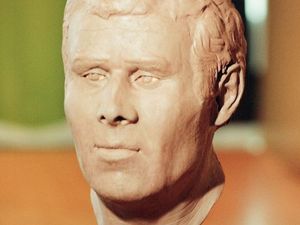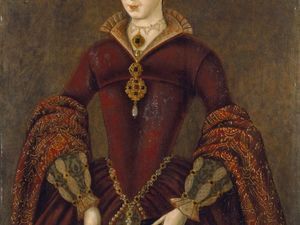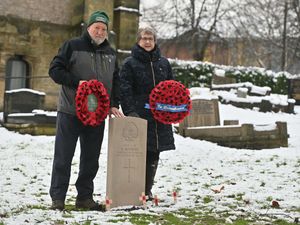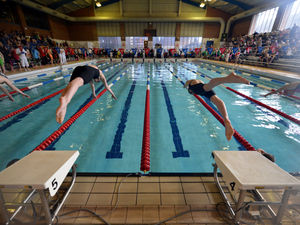Mystery of the severed head, thrown from the M6 into a field close to school
A gruesome discovery of a severed head remains a mystery, almost 30 years on. Mike Lockley reports.

On a January morning so crisp and clean it turned warm breath into wisps of mist, a pensioner’s dog sniffed and circled excitedly around its discovery.
The hound appeared to have detected a caseball on the school playing field’s hardened turf.
His master strolled to the soiled object, scrutinised it – and recoiled in horror as blank, lifeless eyes, stared back.
Retired school caretaker Roy Jones’ foraging spaniel, Mickey, had found a severed head and ignited one of the Midlands’ greatest murder mysteries – a macabre whodunnit with the all the ingredients of a big screen blockbuster: a fortune in cash, royal links and rumours of illicit arms deals.
And the violent death of Kuwaiti millionaire Adnan Abdul Hameed Al-Sane – beaten so badly he swallowed a tooth – continues to baffle detectives nearly 29 years on.
They still do not know why the former banker was killed in what appeared a blood-splattered ritual. Al-Sane’s head was severed with an Arabic sword.
They still have no suspects.
They believe they know how the head, repeatedly hacked to conceal facial recognition, came to rest in the unlikely setting of Cheslyn Hay High School. It was tossed, like unwanted fast-food litter, from a car travelling along the M6 that shouldered the grounds.
One thing is certain. Mr Jones and his mutt, Mickey, had sparked a near unbelievable criminal chain of events that had its first link under the damp, deserted arches of Manchester’s Piccadilly Station.
They also ignited an outbreak of gallows humour among schoolchildren in the South Staffordshire former pit village who’d chuckle about “being sent to see the head”.
Slowly, detectives began to piece together the case’s complex jigsaw, but the key pieces remain missing. They will probably never be found.
Their work began on December 17, 1993, when officers, marshalling the Christmas shopping bustle, discovered a charred, headless body at Manchester station. The victim, stripped to his underpants remained a “John Doe” for months. Their one lead, an eye-witness account of a man, darked haired and anywhere between 20 and 40 seen lurking at the murder scene, came, not surprisingly, to nothing.
It was Mr Jones and Mickey who inadvertently gave the butchered, burned body a name. First, the head they discovered six weeks after the torso was found 70 miles away featured extensive dental work that could only have been carried out in Kuwait.
DNA brought the scattered body parts together. The frenzied attack was “non-professional, but methodical”, police believed.
Then a ground-breaking clay reconstruction of the splintered skull, smashed into a mosaic of 100 pieces, painstakingly created by Manchester University forensic artist Richard Neave, reaped instant rewards when revealed to the national press in April.
A lawyer who had represented 46-year-old Al-Sane recognised the features.
Greater Manchester Police finally had a name, yet the force’s hope faded quickly as each new trail turned cold, each inquiry led to a cul-de-sac of confusion.
Al-Sane, it appeared, lived in the shadows and it became near impossible to shine a light into the fog of his existence. One friend described his lifestyle as “discreet but affluent”. And each fresh twist cemented detectives’ beliefs that they were dealing with something much deeper than a mere revenge killing.
Al-Sane was last seen on December 14, 1993, dining with a business associate at the Britannia Hotel, Grosvenor Square, London. He left, by taxi, for his luxurious, Maida Vale flat at midnight and, it is believed, was abducted soon after.
Yet there were no signs of a struggle at the rented, West End home and, mysteriously, six boxes, containing stocks and shares, were missing.
Al-Sane’s private life was so private, colleagues did not report his disappearance to police until January - despite his failure to attend a key business meeting on December 15.
This led police to believe money was the catalyst for brutal murder. Det Supt Bernard Rees, of Greater Manchester Police, said at the time: “Financial motive is the only one I can think of, unless someone tells us something to the contrary.”
Rumours began to swirl around Al-Sane, who moved to this country in 1986. He was immersed in deals that were beyond dodgy, it was alleged.
His financial empire was crumbling and he’d lost a fortune at the casinos he regularly visited, it was claimed. He had links to Kuwaiti royalty and another home in Switzerland.
On his death, Al-Sane, from a merchant family, had a personal wealth of close to £25million. That’s big bucks, but flew in the face of initial reports the victim had amassed billions.
Al-Sane was embroiled, it was whispered, in a bitter cash feud in his home country where a contract had been signed and sealed on his life.
He was earning grubby money through clandestine arms deals, one source told me. That allegation remains unfounded.
The grotesque manner of Al-Sane’s death certainly suggested someone wanted to make an example of the businessman. Someone wanted to send out a message, a warning.
The Guardian claimed Al-Sane was forced to flee here after the crash of the unofficial Kuwaiti stock market in 1982, leaving a £30 billion trail of bad debts.
At the time, his family owned 10 companies dealing in a range of enterprises, including hotels and construction.
In another strange turn, in April, 1994 – only days after the clay head was made public – a businessman with close links to Al-Sane was shot and seriously wounded in London. He had taken a bullet to the face.
Police tried, but failed to find a link between the two crimes.
The investigation threw Cheslyn Hay into the international spotlight: Al-Sane was a global business figure. And the gripping tale made much bigger headlines abroad than at home.
Villagers struggled to comprehend the discovery. While giving me a rundown of the previous evening’s meeting, a parish councillor broke off from his report on dog fouling, drainage issues and Tree Preservation Orders to announce as a footnote: “...and they reckon there’s a severed head on the school playing field.
“Don’t get too excited – the wife says it’s a cabbage.”
Italian investigative journalist Riccardo Orizo speculated Al-Sane had been lured to the black side of wheeling and dealing by simple boredom. Dabbling in stocks and rolling dice at casinos did not provide a sufficient adrenaline rush.
“This was a lifestyle maybe a little too quiet for a man who had known the chills of high finance,” he wrote.
With the 30th anniversary of Al-Sane’s death approaching, key questions still scream out. Why mutilate the man in Manchester, a city he had no connection with? Why go to such sickening lengths to mask his identity?
Realistically, we’ll never have the answers.
Two things have, with time, become clear. Adnan Abdul Hameed Al-Sane was murdered by forces much darker than you and I can comprehend. Dark enough to ensure Det Supt Rees’ assertion at the time – “it’s bizarre and mystifying” – stood the test of decades.
And the barbaric nature of his death proves that, in the sewer system of serious crime, money talks, but blood – thick and free flowing –- inevitably has the final word.





